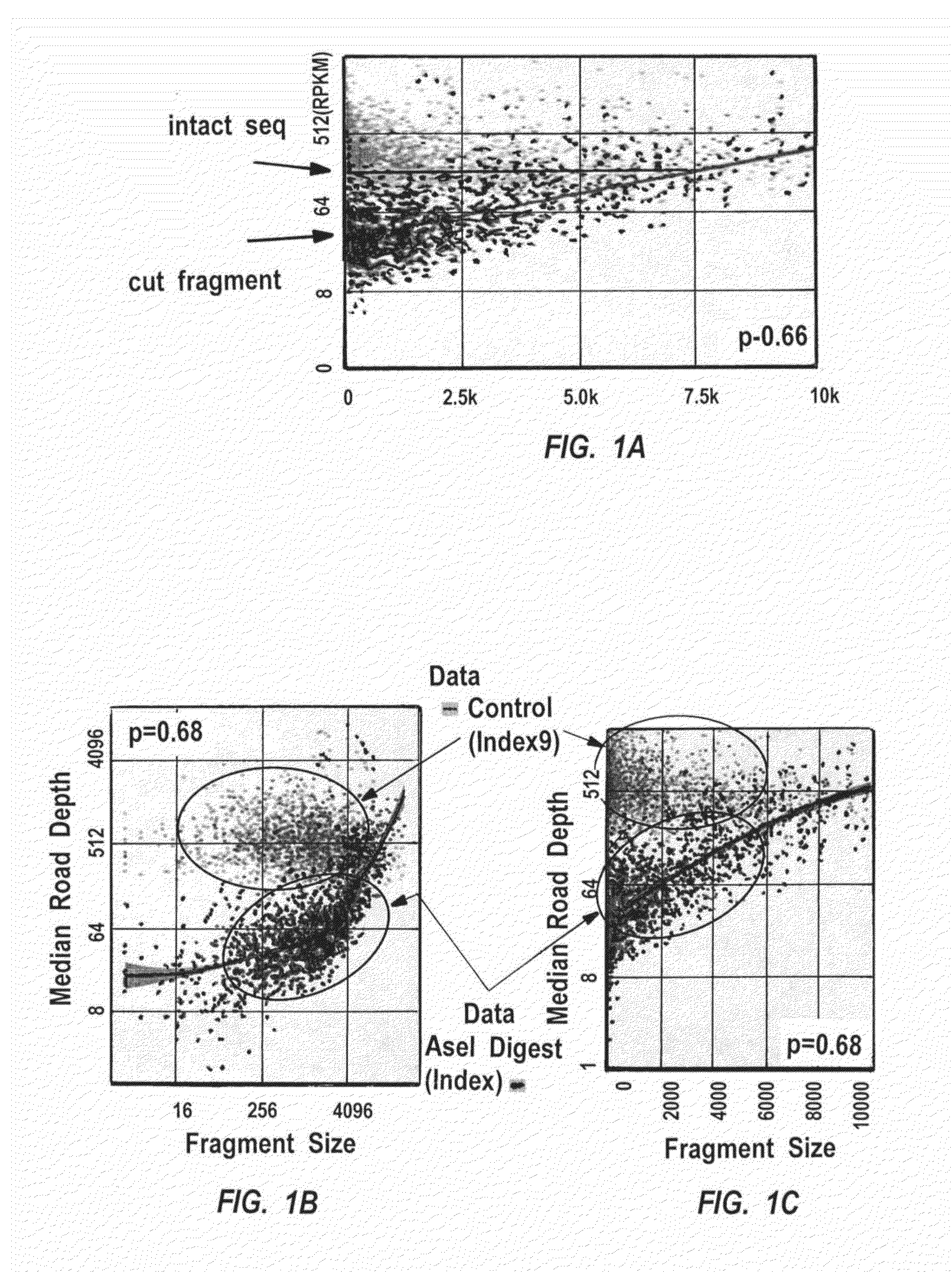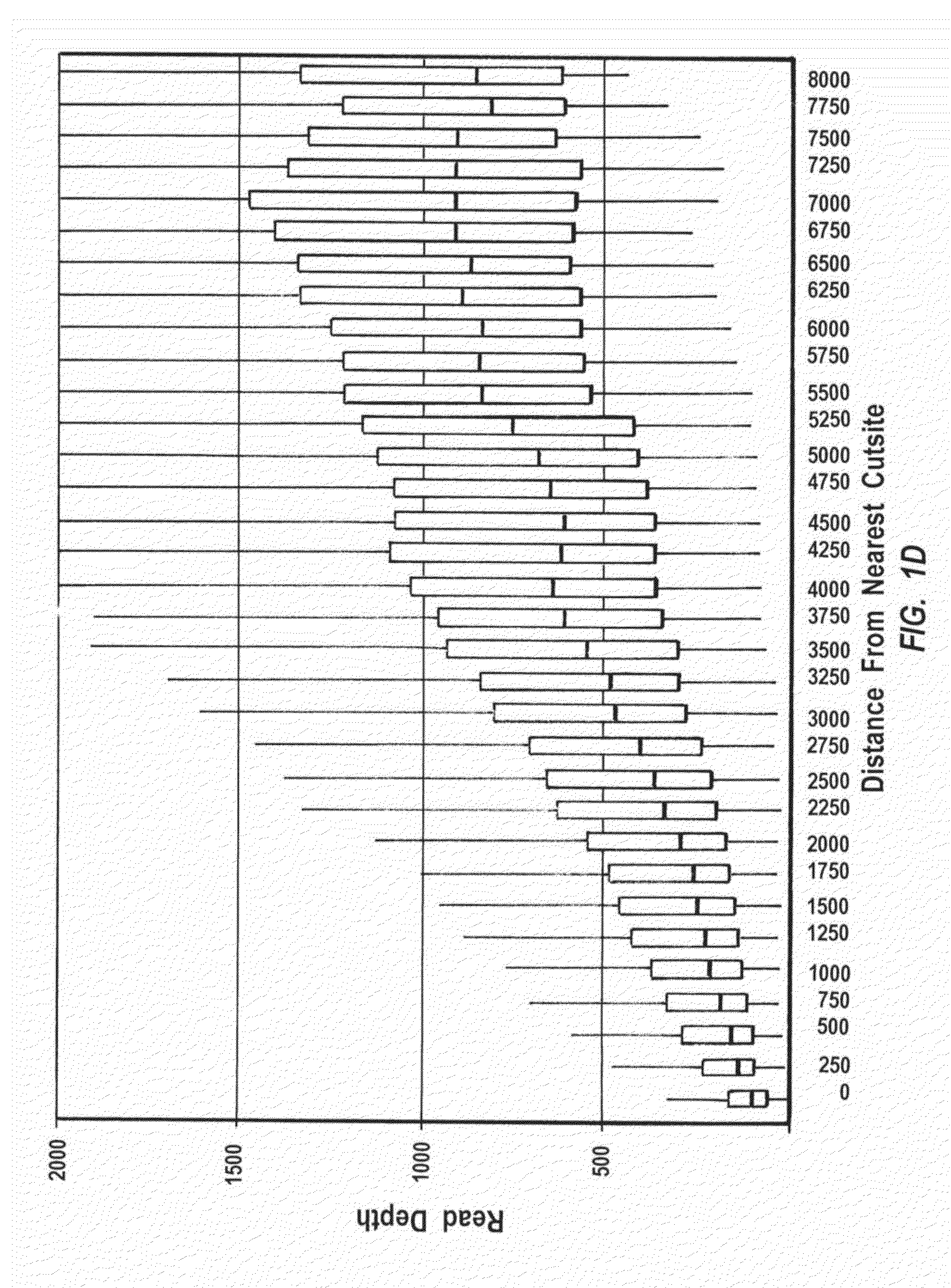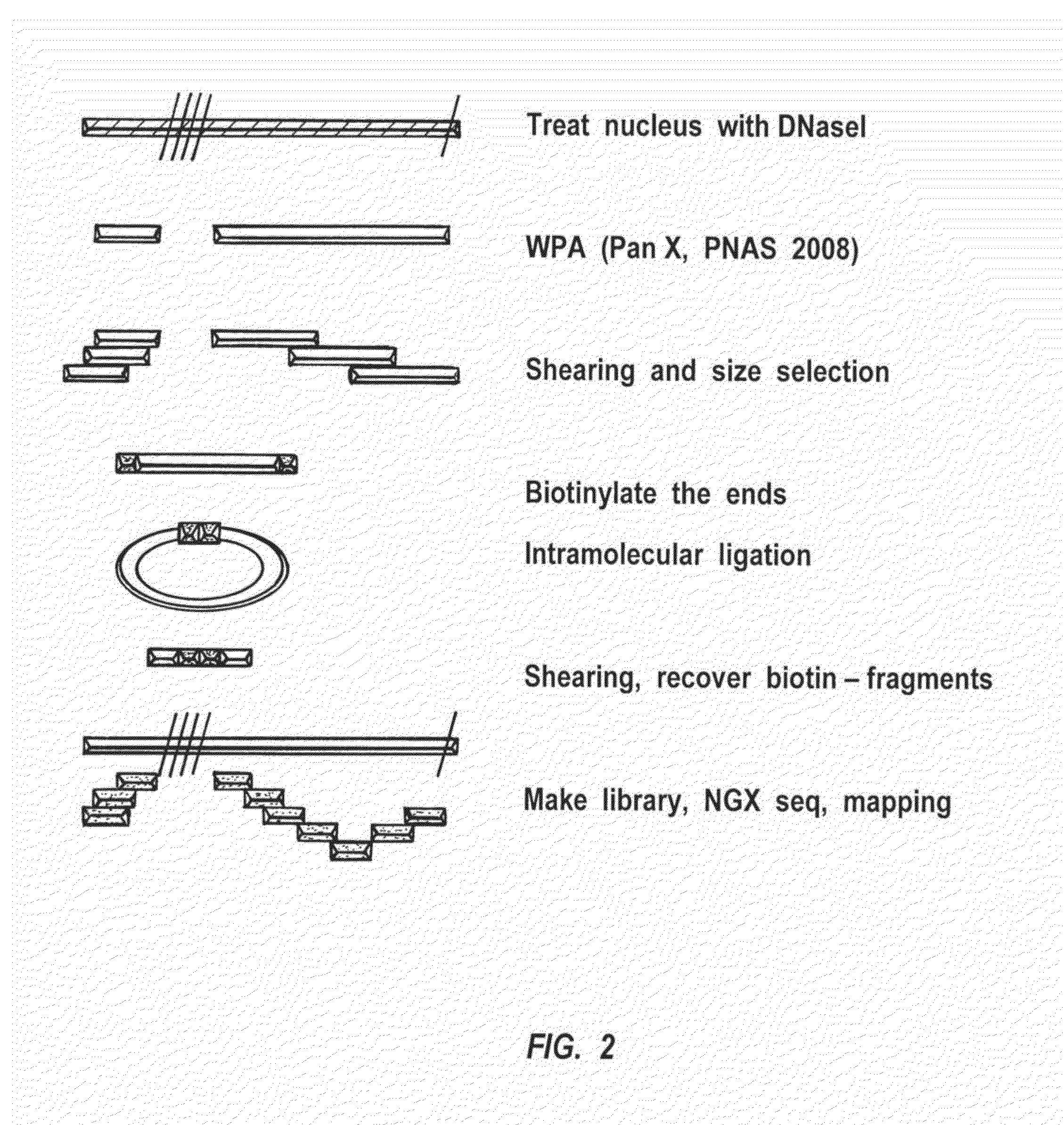Methods for closed chromatin mapping and DNA methylation analysis for single cells
a chromatin mapping and methylation analysis technology, applied in the field of single cell chromatin mapping and dna methylation analysis, can solve the problems of insufficient prior efforts to map chromatin sites based on dhs analysis alone, confound interpretation, and low efficiency, so as to reduce the chance of falsely categorizing fragments, minimize the chance of false categorizing, and/or prevent the effect of ligation efficiency
- Summary
- Abstract
- Description
- Claims
- Application Information
AI Technical Summary
Benefits of technology
Problems solved by technology
Method used
Image
Examples
example 1
Analysis of Phi29-Based Amplification Efficiency
Materials and Methods
[0333]Escherichia coli K-12 genomic DNA was digested with AseI (ATTAAT), comparing with its intact counterpart genome, subjected to WPA amplification (Pan, et al., PNAS, 105(40):15499-504 (2008)), and HiSeq2000 sequencing.
Results
[0334]The relative effectiveness of a multiple displacement method of genome amplification referred to as whole-pool amplification (WPA), on DNA of various lengths was determined by quantitation of the sequencing reads of different size fragments from a complete restriction digestion (PsiI, TTATAA (SEQ ID NO:77)), which is indifferent to the methylation status of deoxycytidylic acid) of E. coli genomic DNA. The results indicate that overall, when the fragment size is>=4 kb, the amplification efficiency is maximally independent of the size, however, when the fragment is E. coli genome with AseI (X axis). Y axis: read depth (RPKM); X axis: fragment size. The genome was digested and amplified ...
example 2
Whole Genome Scale Blocks of DNA from Condensed Chromatin (DHRS) can be Recovered and Sequenced
Materials and Methods
[0337]DHRS-Based Chromatin Profiling
[0338]An exemplary DHRS-based method of chromatin profiling is illustrated in FIG. 2. Using the procedure showed in FIG. 2, conditions and methods were originally tested with aliquots of 100 cells each from a single growth of K562 cells in each test, and afterwards it was scaled down to single cells. Aliquots that were snap-frozen and stored at −80 C were also be tested. A procedure that were scaled down directly onto samples of ˜100 cells or less included using the nuclei isolated by cell lysis in 0.1% non-ionic detergent IGEPAL CA-630. The nuclei were recovered by centrifugation (Crawford, et al, PNAS, 101:992-997 (2004)), and were then directly processed for DHRS. The nuclei were then treated with a freshly diluted pancreatic DNase I (the concentration and reaction duration can be optimized, as can all steps below). The reaction w...
example 3
MDA-Based CpG Methylation Analysis (MSRE-MDA)
[0350]Materials and Methods
[0351]FIG. 11 is a diagram showing an exemplary method of CpG methylation pattern scanning (CpGMp). The Test DNA (purified or directed extracted from intact cell) was digested, except for MC, with MSRE (1st set of REs). Both were amplified by MDA (e.g., WPA). The amplicon was then digested with the 2nd set of RE (e.g, BstUI) to enrich CpG-rich DNA sequences (CpG islands and shores) for library construction and efficient sequence coverage even with reduced sequencing depth.
[0352]MC represents Methylation Control, which is not cut so as to demonstrate all potential DMRs (Differentially Methylated Regions). GUC (General Unmethylated Control) is a control with bulk DNA from the same type of cells to show the unmethylated DMRs in the cell population. Me is methylated DMR; U-Me is unmethylated DMR. The MSRE (1st set of RE) applied to digest the original gDNA is to distinguish Me-DMRs as long and intact fragments, whic...
PUM
| Property | Measurement | Unit |
|---|---|---|
| temperature | aaaaa | aaaaa |
| pH | aaaaa | aaaaa |
| temperature | aaaaa | aaaaa |
Abstract
Description
Claims
Application Information
 Login to View More
Login to View More - R&D
- Intellectual Property
- Life Sciences
- Materials
- Tech Scout
- Unparalleled Data Quality
- Higher Quality Content
- 60% Fewer Hallucinations
Browse by: Latest US Patents, China's latest patents, Technical Efficacy Thesaurus, Application Domain, Technology Topic, Popular Technical Reports.
© 2025 PatSnap. All rights reserved.Legal|Privacy policy|Modern Slavery Act Transparency Statement|Sitemap|About US| Contact US: help@patsnap.com



